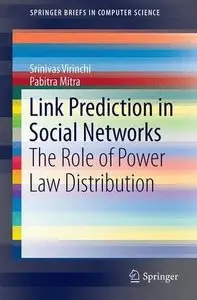Link Prediction in Social Networks: Role of Power Law Distribution
Springer | Database Management & Information Retrieval | Feb. 17 2016 | ISBN-10: 3319289217 | 67 pages | pdf | 1.15 mb
Springer | Database Management & Information Retrieval | Feb. 17 2016 | ISBN-10: 3319289217 | 67 pages | pdf | 1.15 mb
Authors: Srinivas, Virinchi, Mitra, Pabitra
Presents an accessible explanation of the role of power law degree distribution in link prediction
Describes a range of link prediction algorithms in an easy-to-understand manner
Discusses the implementation of both the popular link prediction algorithms and the proposed link prediction algorithms in C++
This work presents link prediction similarity measures for social networks that exploit the degree distribution of the networks. In the context of link prediction in dense networks, the text proposes similarity measures based on Markov inequality degree thresholding (MIDTs), which only consider nodes whose degree is above a threshold for a possible link. Also presented are similarity measures based on cliques (CNC, AAC, RAC), which assign extra weight between nodes sharing a greater number of cliques. Additionally, a locally adaptive (LA) similarity measure is proposed that assigns different weights to common nodes based on the degree distribution of the local neighborhood and the degree distribution of the network. In the context of link prediction in dense networks, the text introduces a novel two-phase framework that adds edges to the sparse graph to forma boost graph.
Number of Illustrations and Tables
5 in colour
Topics
Data Mining and Knowledge Discovery
Computer Communication Networks
Click Here to Buy the Hardcover from Springer
Click Here for More books



